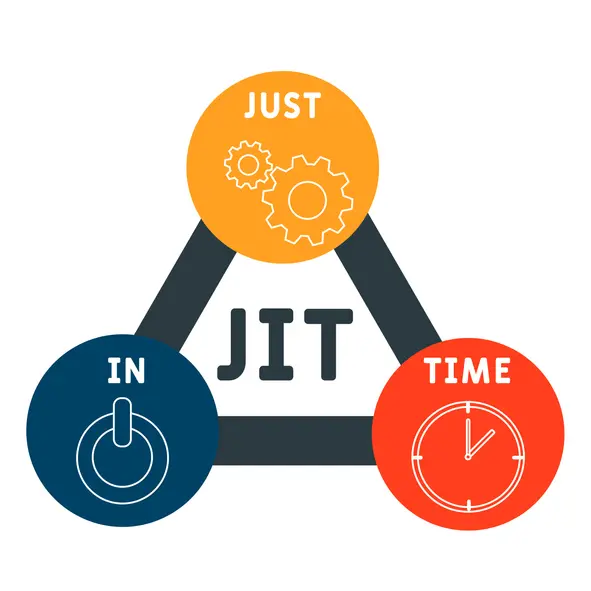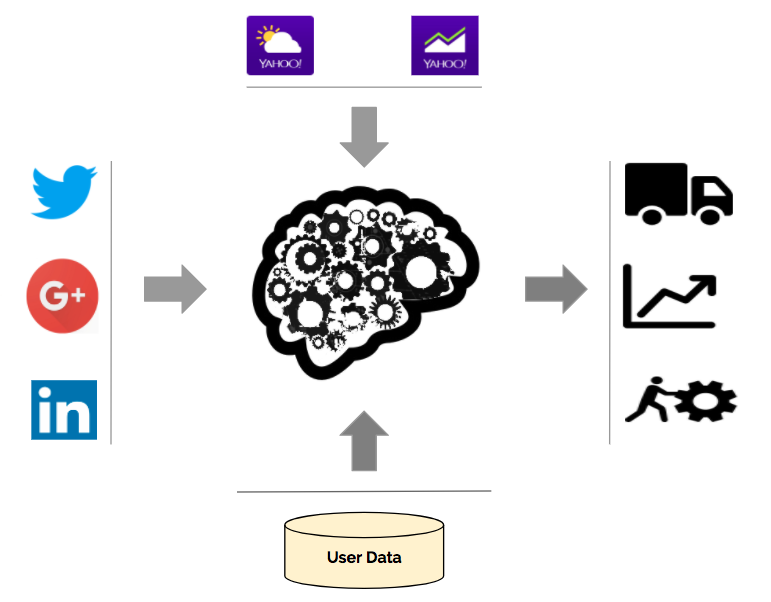Inventory optimisation is essential for modern businesses seeking to streamline their supply chain, reduce costs, and enhance customer satisfaction. By managing inventory levels strategically, companies can avoid the pitfalls of overstocking and understocking, cutting waste, minimising holding costs, and ensuring that products are available when customers need them. Effective inventory optimisation strengthens operational efficiency and the bottom line, creating a competitive advantage in a fast-paced market.
What is Inventory Optimisation?
Inventory optimisation involves calculating the ideal stock quantity and timing to meet demand while minimising costs tied to holding, ordering, and potential stockouts. This practice is particularly crucial for e-commerce and other fast-moving industries, where balanced stock levels help satisfy customer expectations for quick delivery without the burden of excess inventory. Beyond financial gains, optimised inventory management supports sustainable practices by reducing waste, which resonates with today’s environmentally conscious customers and stakeholders.
Key Elements of Inventory Optimisation
Effective inventory optimisation requires skillfull managing essential elements: understanding inventory types, forecasting demand with precision, and setting accurate safety stock levels. Managing these factors allows businesses to align supply with demand, achieving smoother operations and greater customer satisfaction. Together, these elements form a cohesive strategy that ensures customer needs are met while keeping costs under control, enhancing both efficiency and resilience in a dynamic market.
Types of Inventory
Understanding the types of inventory—raw materials, work-in-progress (WIP), and finished goods—is essential for tailored management strategies.
- Raw materials are the foundation of production, requiring careful timing and quantity to prevent production delays.
- WIP inventory represents items still in production. Balancing WIP is key; too much ties up resources, while too little disrupts production flow.
- Finished goods are ready for sale, where effective management ensures availability without overstocking, reducing costs and risk of obsolescence.
Demand Forecasting
Accurate demand forecasting is at the heart of inventory optimisation. By predicting customer needs based on historical data, trends, and seasonality, businesses can maintain ideal stock levels, minimising the risks of both stockouts and surplus. Advanced methods, such as machine learning, enable precise forecasting, incorporating factors like economic shifts or competitor actions, which helps businesses respond dynamically to market changes and seasonal demands.
Safety Stock and Reorder Points
Safety stock provides a cushion against demand spikes and supply disruptions, ensuring customer needs are met without excessive holding costs. Calculating optimal safety stock levels balances risk and efficiency. Reorder points signal when to replenish inventory, considering lead times and average demand to avoid stockouts. With a consideration of accurate reorder points, businesses can maintain continuous product availability, optimising stock flow without costly last-minute orders.
Each of these elements—inventory types, demand forecasting, safety stock, and reorder points—works together to streamline operations, reduce costs, and elevate customer satisfaction.
Why Inventory Optimisation is Crucial for Business Success
Inventory optimisation is essential to business success, boosting cost efficiency, operational performance, and customer satisfaction. With optimised inventory levels, companies are well-prepared to meet customer demands, sidestepping the challenges of overstocking and stockouts. This agility allows businesses to adapt quickly to changing markets and customer needs, fostering a competitive edge.
Reducing Operational Costs
Optimising inventory reduces operational costs by minimising expenses linked to storing, handling, and safeguarding inventory. Excess stock raises storage and maintenance costs, while unsold items risk obsolescence, leading to waste. Leaner inventory levels free up capital for more productive uses, cutting costs associated with insurance, security, and inventory management.
Enhancing Customer Satisfaction
Effective inventory management directly boosts customer satisfaction. With optimised stock levels, businesses can consistently meet customer needs, offering quick delivery and reducing out-of-stock situations. This reliability builds trust, driving customer loyalty and enhancing lifetime value through positive experiences.
Preventing Overstocking and Stockouts
Balancing inventory levels is crucial for avoiding overstocking, which leads to wasted resources, and stockouts, which cause lost sales and dissatisfaction. Optimised inventory allows businesses to keep just the right stock, ensuring responsiveness to market changes without extra costs. This balance prevents the financial drain of excess stock and the revenue loss from stockouts, keeping companies efficient and responsive.
Major Challenges in Inventory Optimisation
Inventory optimisation comes with its own set of challenges. Companies must tackle obstacles such as outdated technology, shifting demand patterns, and external pressures, all of which can affect their ability to keep inventory levels balanced. Overcoming these challenges demands a proactive approach and a readiness to invest in suitable tools and systems.
Legacy Systems and Data Issues
Outdated inventory systems and poor data quality pose significant barriers to effective inventory optimisation. Legacy systems often lack real-time integration, making it difficult for businesses to adapt quickly to market changes. Inaccurate data can lead to flawed forecasts and misguided decisions, resulting in excess inventory or stockouts. Investing in modern systems that offer real-time capabilities and ensuring data accuracy through regular audits can enhance decision-making and inventory control.
Managing Demand Fluctuations
Fluctuating demand is a constant challenge in inventory optimisation. Rapid shifts in customer preferences and external factors, like economic trends or seasonal demand, require businesses to be agile. Leveraging advanced forecasting tools, such as analytics and machine learning, allows companies to predict demand changes accurately and adjust inventory accordingly. Seasonal spikes, like holiday shopping, demand careful planning to ensure adequate stock without overinvestment during slower periods.
Managing Supplier Reliability and Lead Time Fluctuations
Supply chain disruptions, variable lead times, and supplier inconsistencies complicate inventory management. Close collaboration with suppliers, diversifying sources, and tracking performance data help mitigate these risks. Real-time tracking technology offers supply chain visibility, allowing companies to anticipate issues and adjust inventory strategies, thus reducing stockouts and keeping up with demand despite supply uncertainties.
Competition and Pricing Pressures
In a competitive market, inventory strategies must adapt to rivals’ actions and pricing trends. Competitor promotions can sway demand, requiring companies to maintain flexible inventory levels. Data analytics helps businesses understand how pricing impacts purchasing, enabling them to plan stock effectively, especially during promotions or high-demand periods. This responsiveness supports competitiveness and ensures consistent customer satisfaction.
Best Inventory Optimisation Techniques
Businesses can utilise a variety of effective techniques to optimise inventory, enhance operational efficiency, and minimise waste. These methods offer a systematic approach to inventory management, enabling companies to maintain better control over their stock levels.
ABC Analysis
ABC analysis divides inventory into three categories—A, B, and C—based on value and importance. Category A items, representing high value but low volume, require close monitoring to ensure availability, as they significantly impact profitability. Category B items have moderate value and need regular oversight, while Category C items, with lower value, are managed with less stringent controls. This categorisation enables businesses to allocate resources efficiently, directing attention to items that most affect profitability.
Just-In-Time (JIT) Inventory Management
Just-In-Time (JIT) decrease inventory levels through producing or ordering items only as needed, reducing excess stock, storage costs, and waste. Best suited for industries with high holding costs or short product life cycles, JIT depends on strong supplier relationships and accurate demand forecasting. This strategy optimises resources by cutting storage needs and lowering obsolescence, though it requires precise coordination with suppliers and demand predictions.
Economic Order Quantity (EOQ)
The Economic Order Quantity (EOQ) model calculates the optimal order size to balance holding and ordering costs, helping businesses efficiently manage stock replenishment while reducing expenses. EOQ uses factors such as demand rate, ordering costs, and holding costs to determine the most economical order quantity. Through EOQ, companies avoid unnecessary ordering costs and reduce surplus inventory, ensuring lean stock levels and efficient resource use.
SKU Rationalisation
SKU rationalisation involves reviewing and reducing low-performing or redundant products, streamlining inventory management and focusing on high-demand items. Removing slow-moving SKUs improves inventory turnover, reduces storage costs, and minimises waste. Analysing sales data and customer demand carefully ensures that decisions reflect what customers need and helps maintain efficient operations.
Vendor Managed Inventory (VMI)
Vendor Managed Inventory (VMI) is a collaborative strategy where suppliers take responsibility for stock levels and replenishment, lessening the workload on businesses and ensuring products remain available. VMI fosters alignment between supply and demand, strengthens supplier relationships, and enhances supply chain reliability. In this approach, suppliers actively monitor and replenish inventory, enabling businesses to focus on core operations and maintain a steady inventory flow.
Each of these techniques—ABC analysis, JIT, EOQ, SKU rationalisation, and VMI—drives inventory efficiency, reduces waste, and supports cost management, empowering businesses to stay agile in a dynamic market landscape.
Advanced Inventory Optimisation Tools and Systems
Advanced inventory tools are essential for optimising stock management. Multi-echelon Inventory Optimization (MEIO) allows businesses to manage inventory across multiple supply chain levels, from raw materials to finished goods, ensuring efficient and cost-effective stock distribution.
Technologies like artificial intelligence (AI) and machine learning further enhance inventory management by refining demand forecasts and automating decision-making. AI analyses extensive data sets to uncover patterns and trends, enabling smarter inventory decisions, while machine learning continuously improves forecast accuracy based on new data.
Inventory management software equipped with real-time tracking and automation streamlines operations, offering visibility into stock levels and enabling fast responses to shifts in demand. By leveraging these advanced tools, businesses enhance efficiency, reduce manual errors, and ensure data-driven inventory decisions.
Inventory Optimisation Best Practices
For successful inventory optimisation, businesses should implement key best practices. Regular inventory audits are essential for ensuring accuracy and uncovering discrepancies, while reorder point formulas help prevent both overstocking and stockouts. Distributing inventory strategically across multiple warehouses can improve delivery speed and reduce costs, enhancing customer satisfaction. Utilising automation tools and data insights streamlines processes, boosts stock visibility, and reduces manual errors. As AI and advanced technologies continue to evolve, their integration into inventory management will empower businesses to stay competitive and adapt more effectively to changing market needs.
Regular Inventory Audits
Routine inventory audits are essential for maintaining accuracy and detecting discrepancies that could lead to inefficiencies, stockouts, or excess. Regularly reviewing inventory records ensures alignment between actual stock levels and demand, while highlighting slow-moving or obsolete items that need attention. Automated systems further enhance accuracy by minimising human error, providing businesses with reliable data for informed decision-making.
Reorder Point Formulas
Using reorder point formulas is vital for balancing stock availability with cost efficiency. Calculating reorder points based on lead times and average demand helps businesses determine the optimal time to replenish inventory, preventing both stockouts and overstocking. These formulas account for variables like demand fluctuations and desired service levels, supporting seamless inventory flow and cutting costly emergency orders.
Strategic Inventory Distribution
Distributing inventory across multiple locations can significantly improve delivery times and reduce shipping costs. By positioning stock closer to key customer areas, businesses enhance satisfaction through faster service and mitigate risks associated with having inventory concentrated in a single location. Analysing demand patterns helps identify ideal warehouse placements, enabling more efficient logistics and competitive service levels.
Leveraging Automation Tools
Automation tools streamline inventory management, enhance stock visibility, and reduce manual errors. Real-time tracking, automated replenishment systems, and data-driven insights enable businesses to maintain optimal inventory levels, ensuring timely reordering and reducing human errors. This automation frees up resources for strategic tasks, allowing businesses to respond proactively to customer needs.
Embracing AI and Advanced Technologies
AI and advanced technologies are reshaping inventory optimisation. AI-powered demand forecasting and machine learning algorithms offer unparalleled precision, allowing businesses to predict demand changes and adjust stock levels accordingly. The Internet of Things (IoT) adds another layer, providing real-time data on stock conditions and movement, giving businesses enhanced visibility and control. Embracing these technologies helps businesses stay competitive, agile, and responsive to evolving market demands.
These best practices—audits, reorder formulas, strategic distribution, automation, and advanced technology—create a robust framework for inventory optimisation, driving efficiency, minimising waste, and ensuring a high level of customer satisfaction.
Inventory Optimisation Future Trends
The future of inventory optimisation will be defined by the integration of advanced technologies. AI, machine learning, and the Internet of Things (IoT) are set to transform inventory management, with AI and machine learning enhancing demand forecasting and decision-making, while IoT delivers real-time insights on stock levels and movement. Together, these tools will provide businesses with greater visibility and control over inventory, allowing them to optimise stock, reduce costs, and improve customer satisfaction.
Blockchain technology is also poised to impact inventory management by offering enhanced transparency and traceability within the supply chain. Through blockchain, businesses can track inventory with precision and ensure ethical sourcing, enabling quick adjustments to shifts in demand or supply.
As technology advances, businesses that embrace these innovations will gain a strong competitive advantage, marked by increased efficiency, deeper insights, and more agile, informed decision-making in an ever-evolving market.






